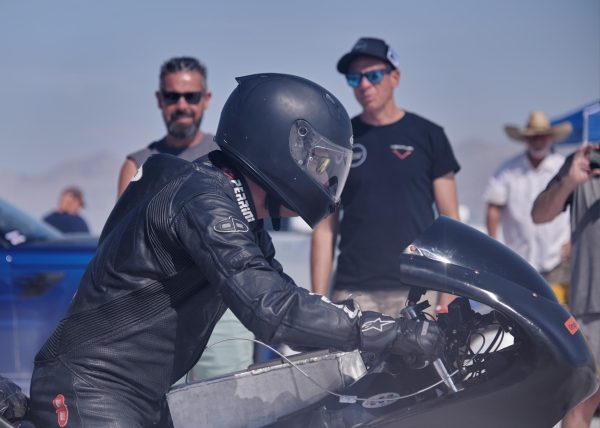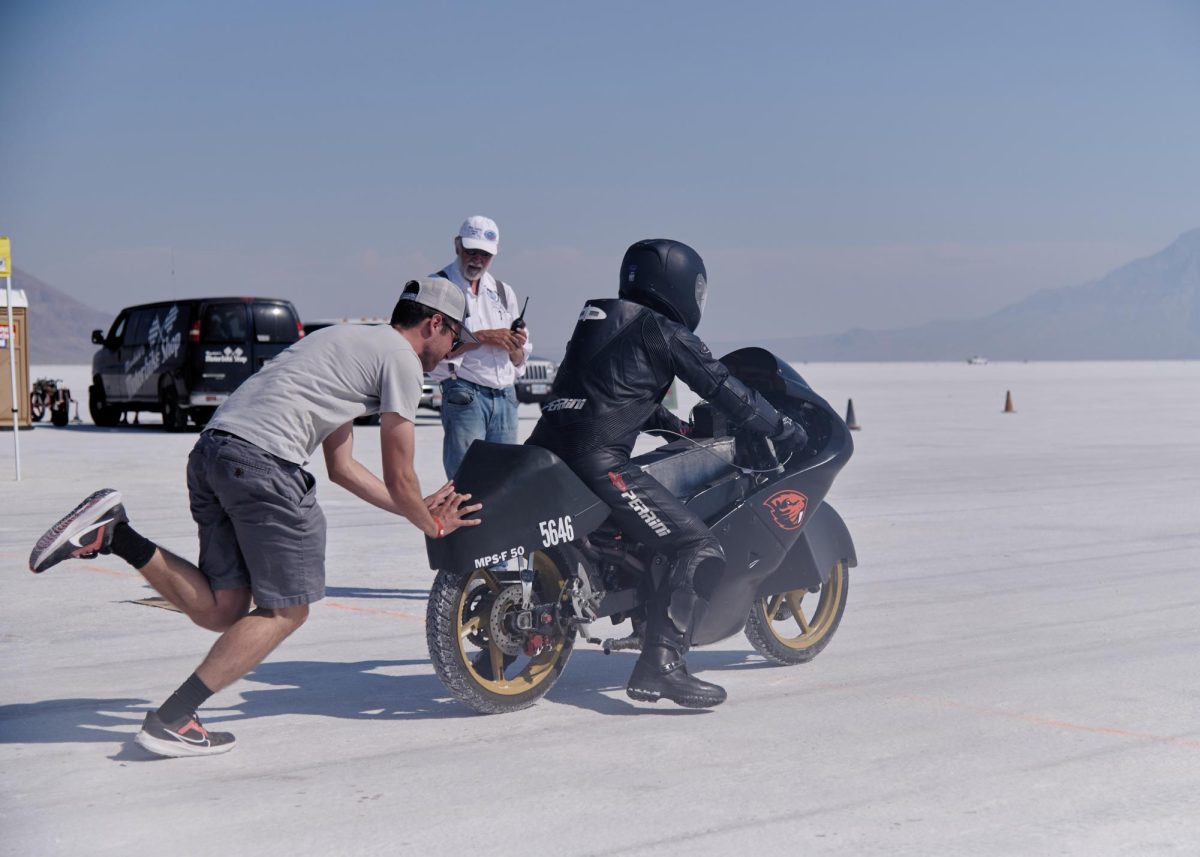For 21 years, the land speed record at the Bonneville Salt Flats remained unbroken.
Until now. The Oregon State University Land Speed Racing Team left for Utah to race in the Southern California Timing Association’s Speed Week on July 30, with racing running from August 3-9.
The team of engineers, with Josh Greeven, a College of Engineering professor, driving the motorcycle, were able to break that record. The team had a whopping initial speed of 86.636 mph, 2.7 mph faster than the 21-year-old record, and a confirmation speed of 85.158 mph.
The Land Speed Racing Team started in Fall 2023 as a capstone project. Greeven’s goal was to go beyond a traditional capstone by incorporating an interdisciplinary approach.
The Land Speed Racing Team had around 20 College of Business students and 20 College of Liberal Arts students focusing on building a social media presence and sponsorship outreach.
“Interdisciplinary work usually gives better outcomes because you have a lot more perspectives,” Greeven said. “And I think it’s a big reason why (the team) is so successful.”
In order to break the long-standing record, the team had to average a faster speed than the record for an entire mile, also known as a “flying mile”. Bikes are given a mile to get up to speed, and then their speed is measured across the next mile. Bikes are then required to do a second flying mile.
“If you do two flying miles averaging together above the record, then that’s considered a record,” Greeven said. “It was kind of a really big deal that we were able to break the record, not to mention that we did it in our first try. This is the first year of the team.”

The team faced numerous challenges throughout the week-long event, including a sweltering 100-degree heat, long wait times for each run and a failed bike inspection.
A few days into the competition, the team was able to make their first run, making it over the record. The next morning, in an early morning run, the team went even. The bike was then taken to “impound” to be inspected to ensure the bike follows all rules.
After coming back from a previous race at El Mirage two months earlier and passing all inspections, the team felt confident that the bike was fine.
“Turns out they found an irregularity,” Greeven said. “So we were just shocked.”
The team was told the tail of their motorcycle was sticking out towards the back about a half inch too much. Because the body, including the tail, had been taken on and off the bike so many times during competitions, it had not been put back on exactly correctly.
“Everyone’s deflated and bummed out,” Greevan said. “So I just look up and say, ‘Well, let’s get back in line. We’ve done it once, we’ve done it twice in fact, so let’s go do it again.’”
The following day, the team was able to run the bike again, setting the record again. The bike was held overnight in impound for inspection leading up to the final day of the competition.
“It’s the last day. So if there’s any kind of screw-up, or oversight of any kind, this is your last shot,” Greeven said.
The team ran their second mile, backing up their record run again. This time, in the impound, the bike was found to be within regulation, and the team officially broke the record with an average speed of 85.897 mph.
The team will be continuing into the 2024-2025 school year, with an incoming team of eleven engineers, with two women to be designated bike riders. The team will go back to race both El Mirage and Bonneville Salt Flats again, with a possibility of converting the bike into an electric bike or adding a second electric bike.












































































































